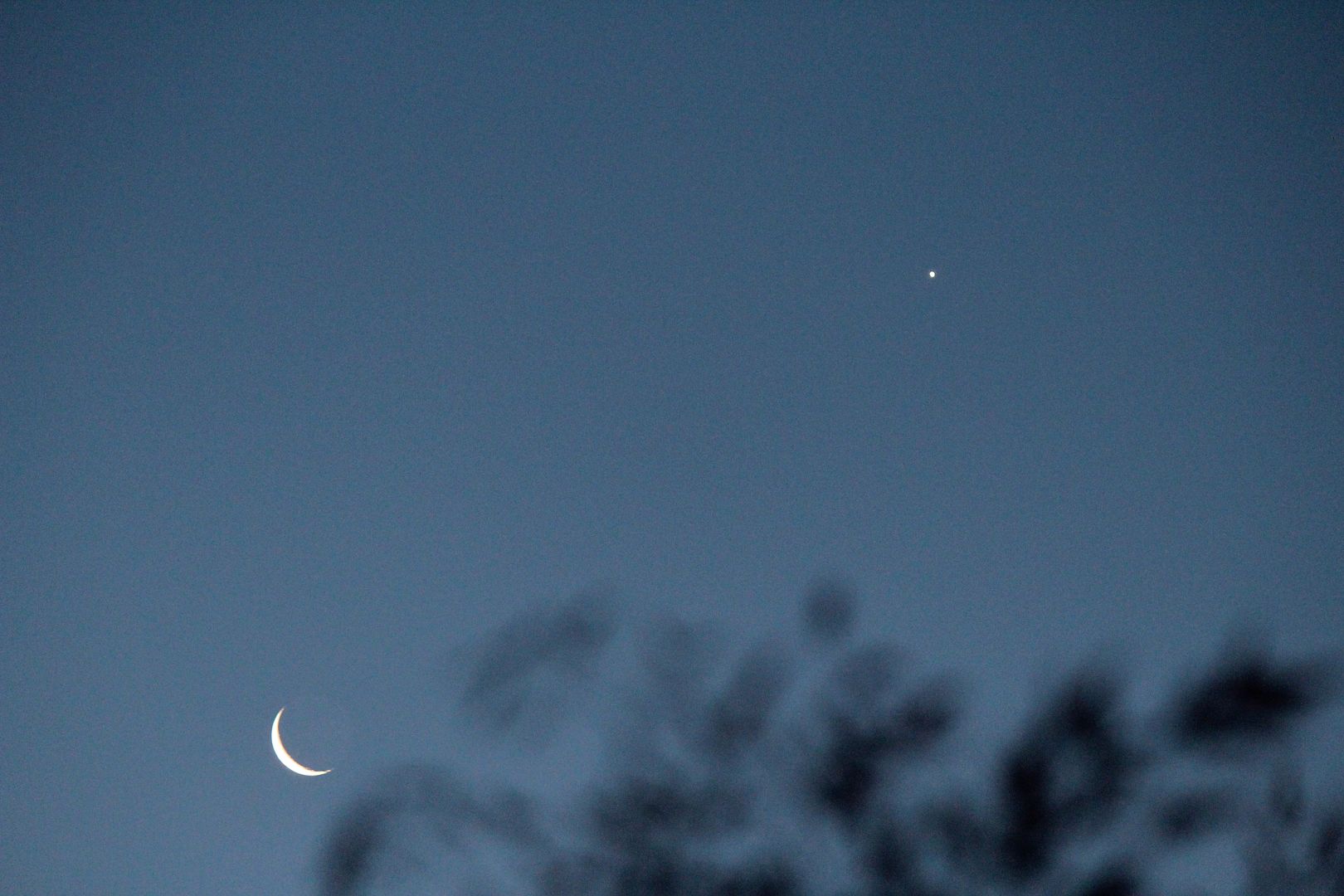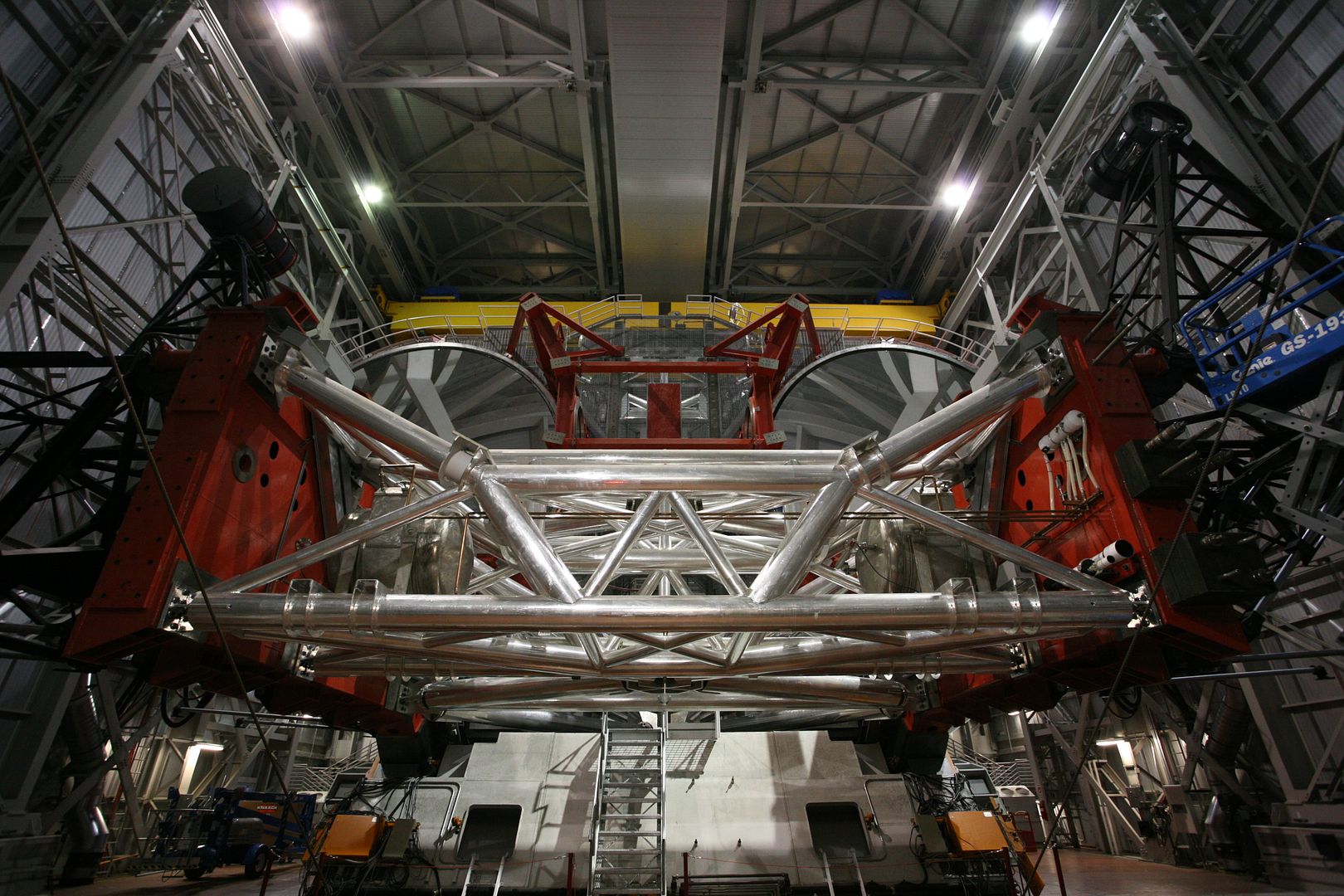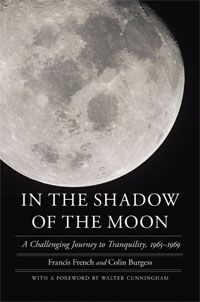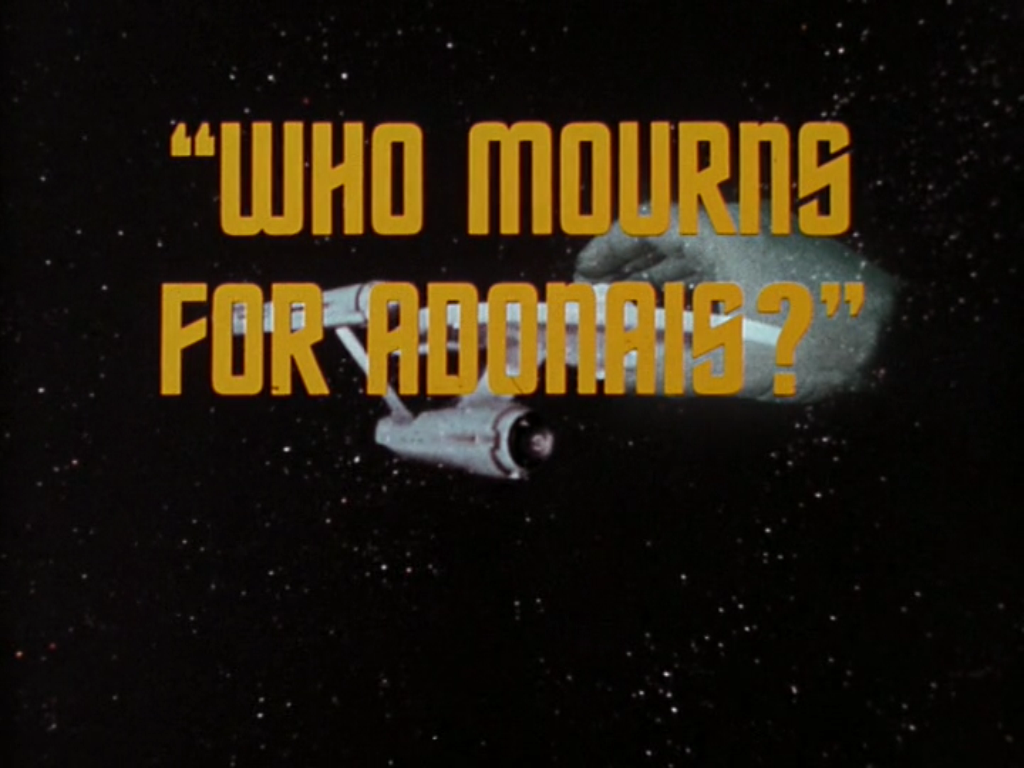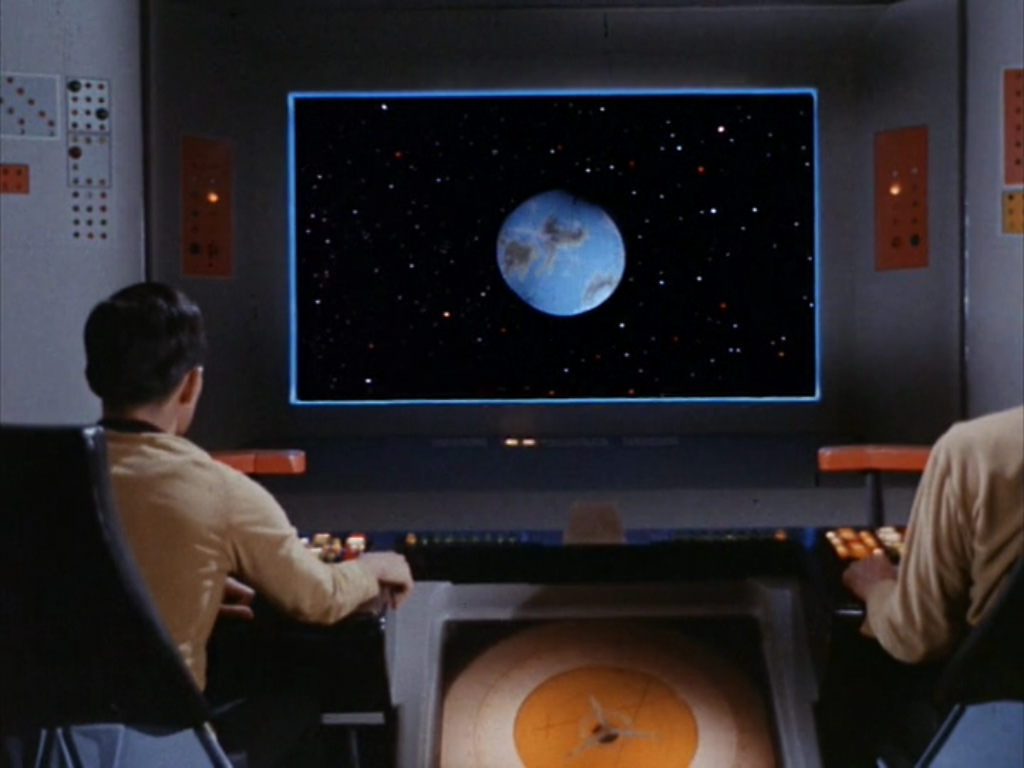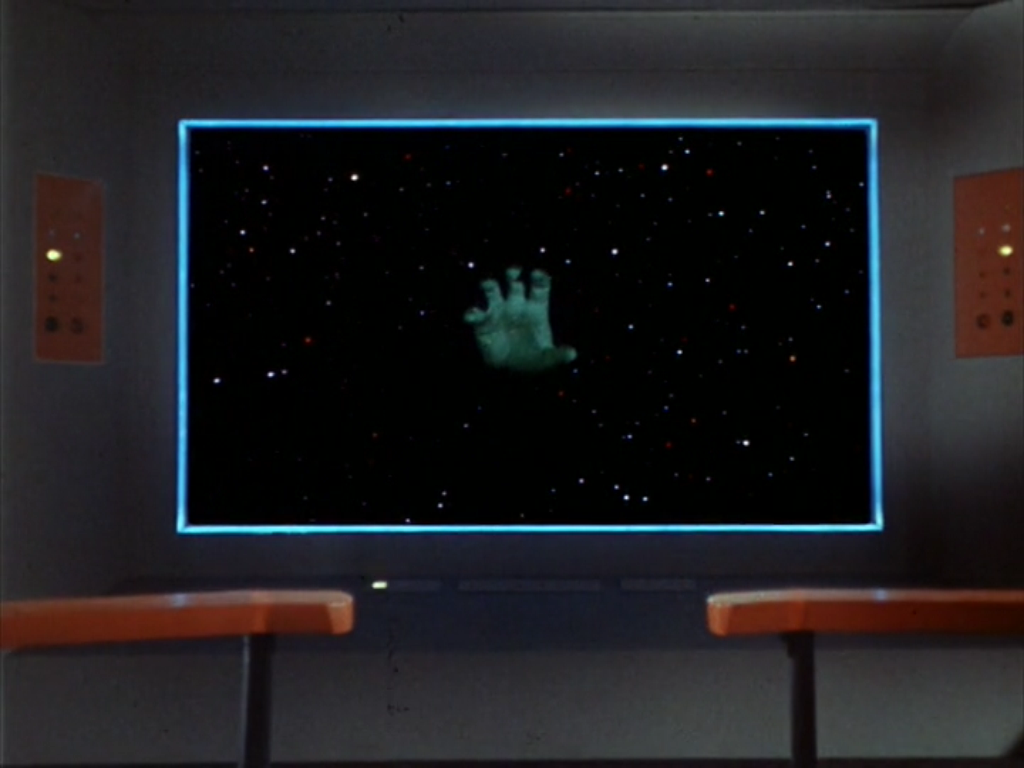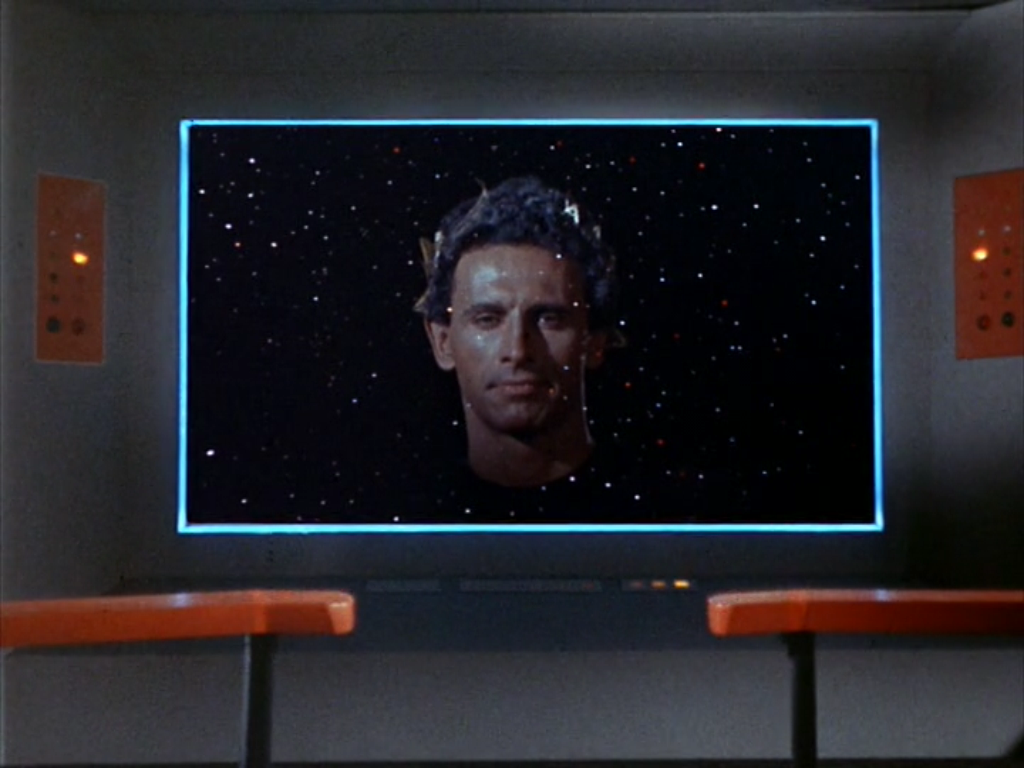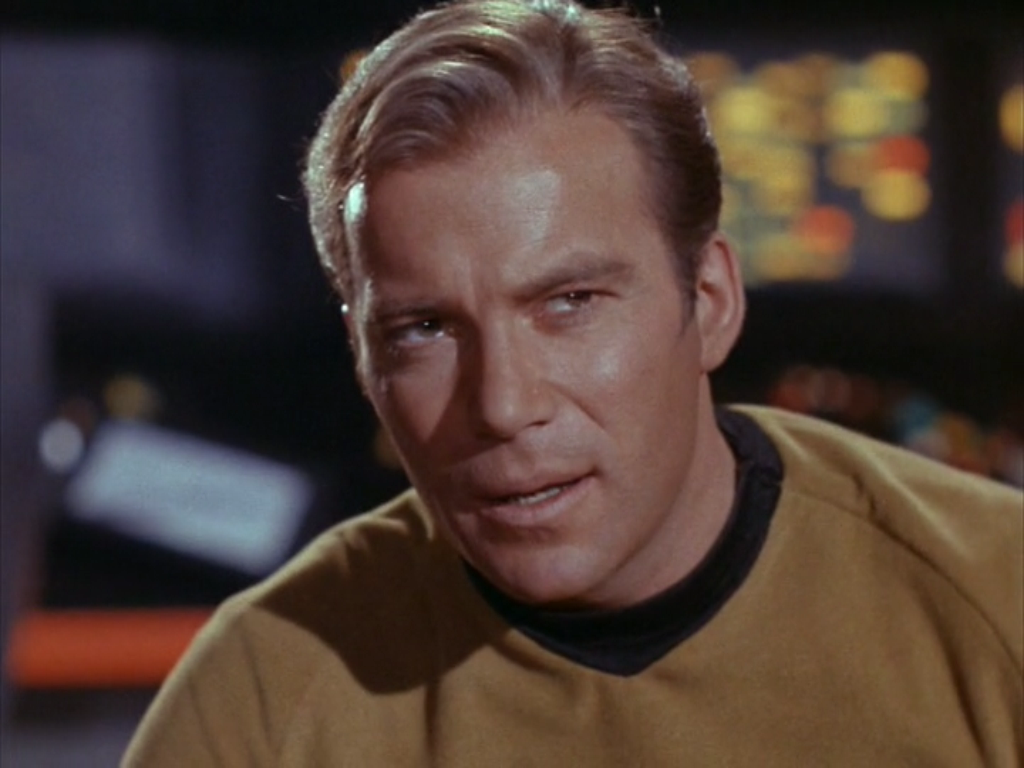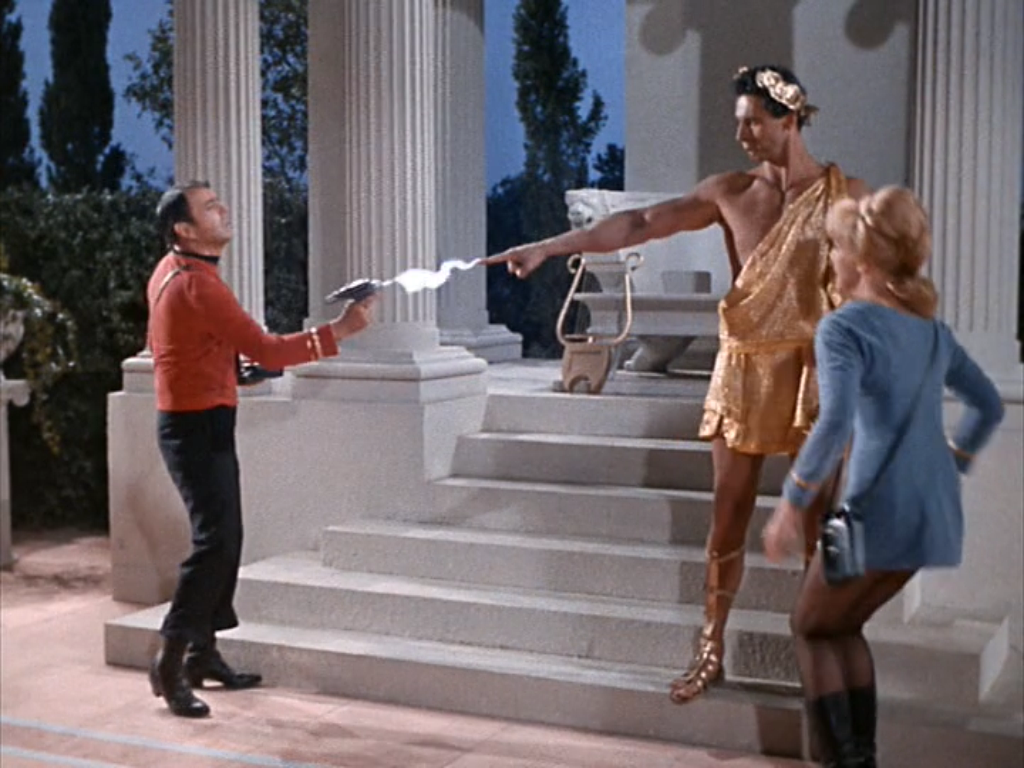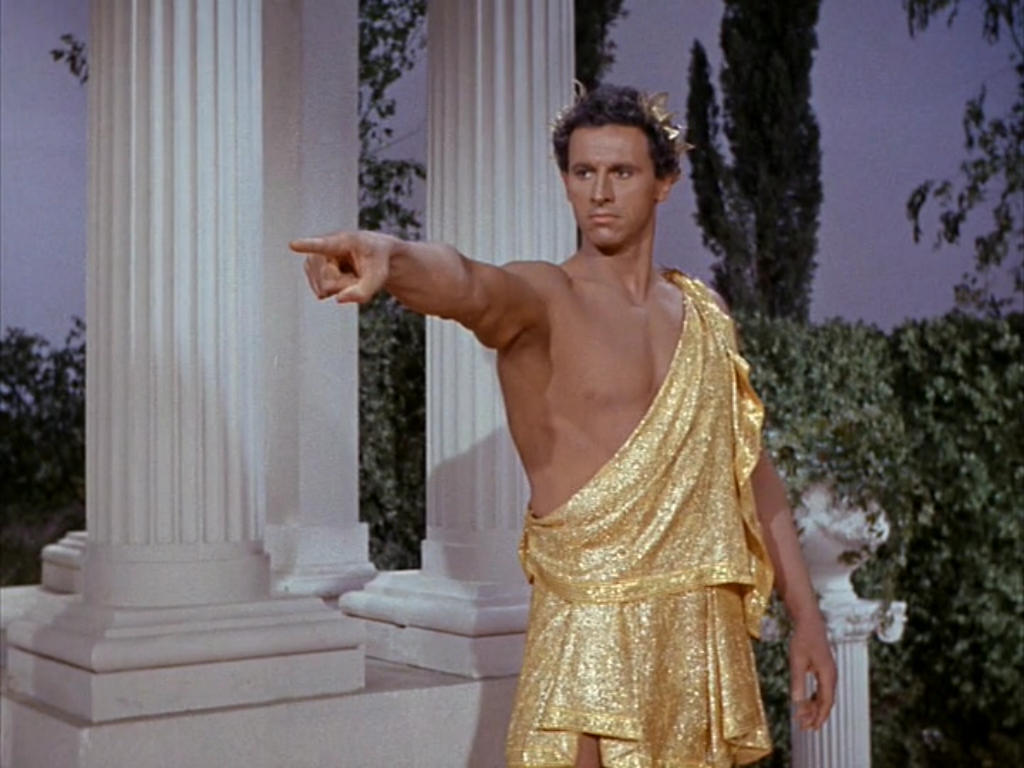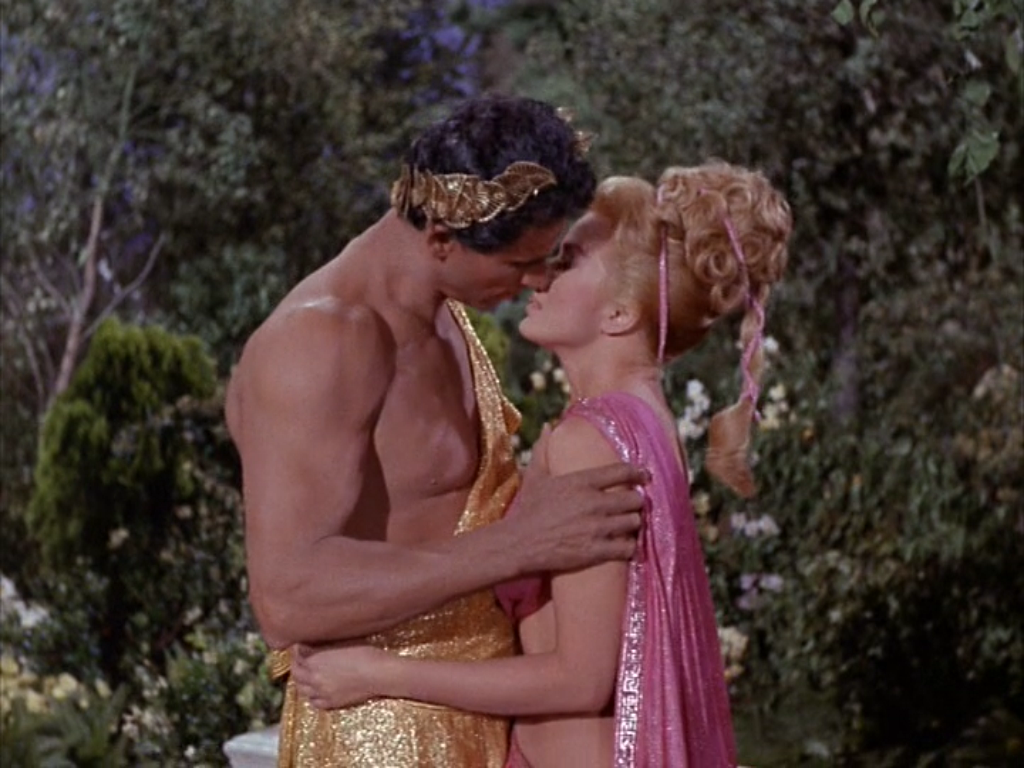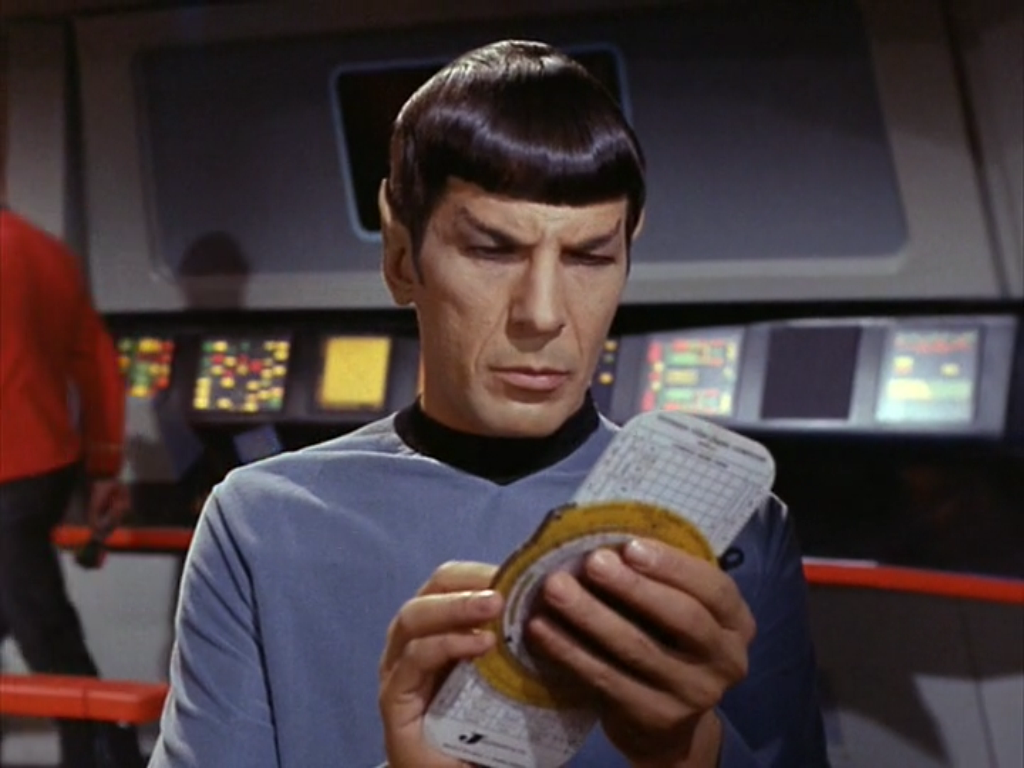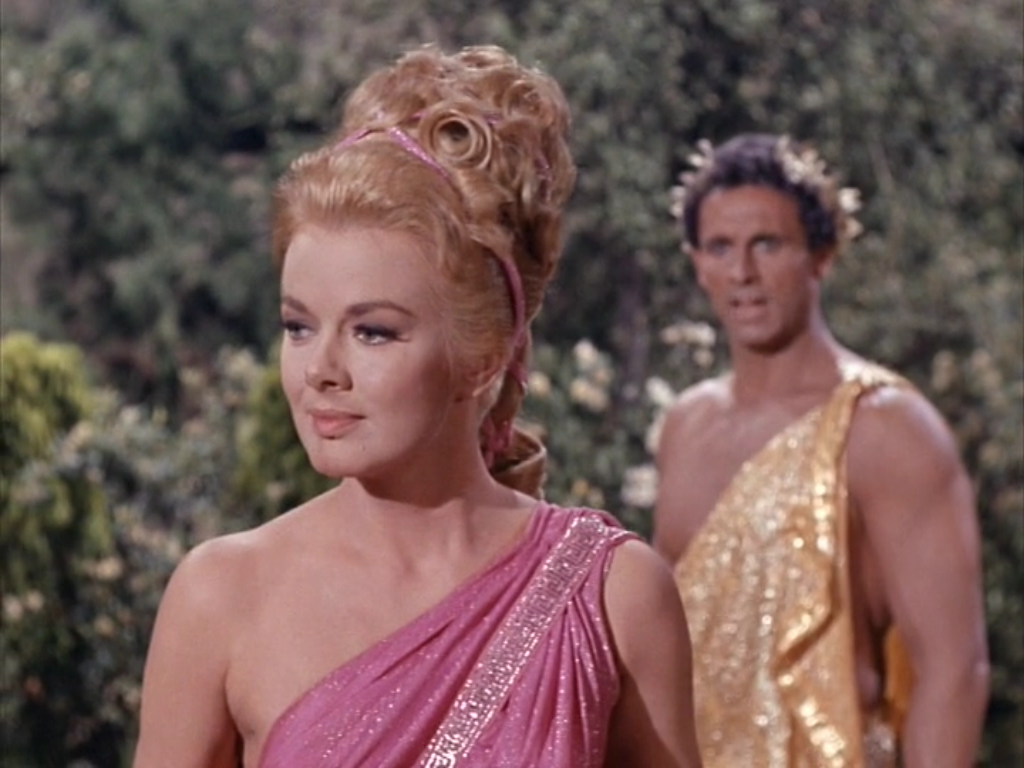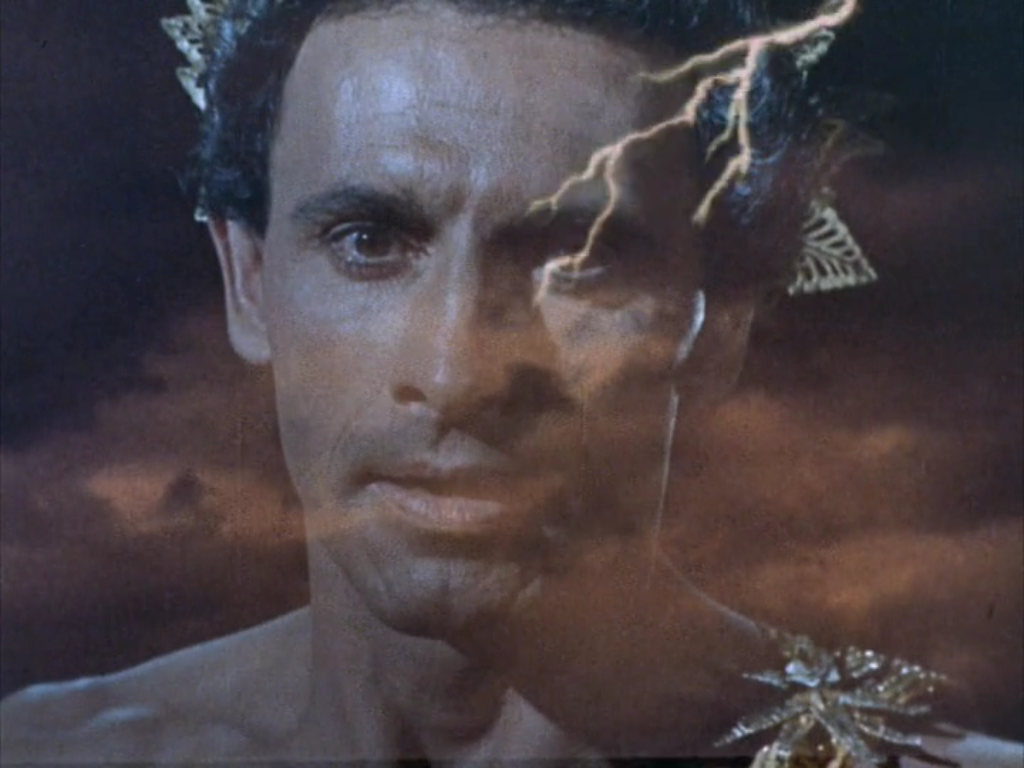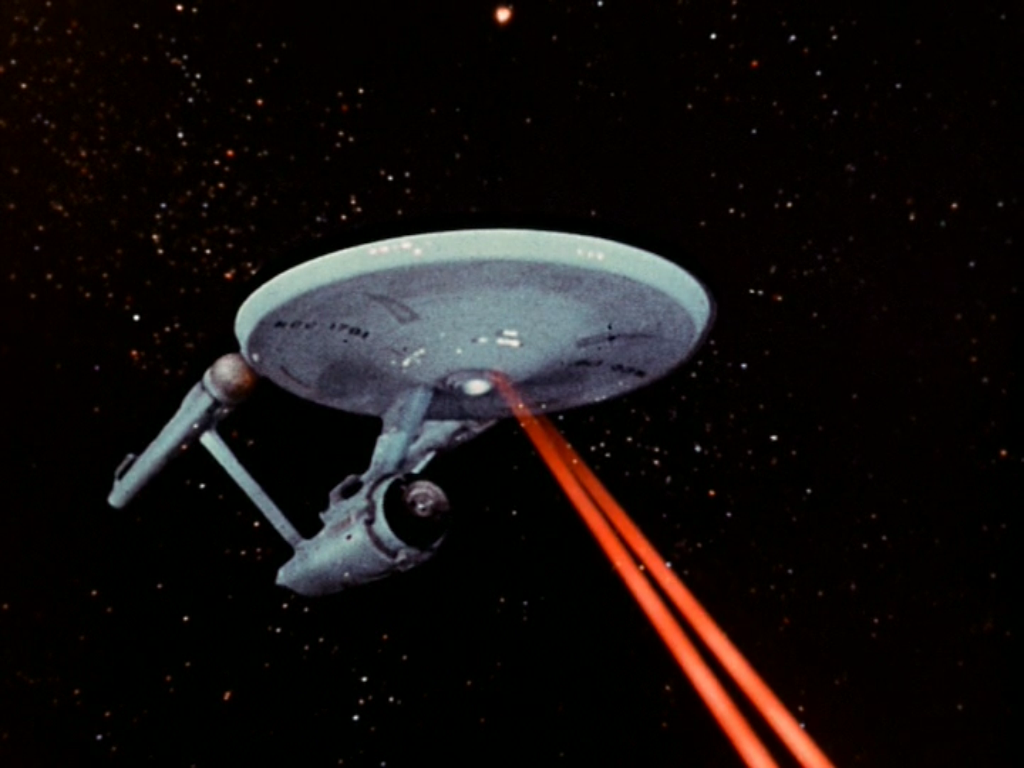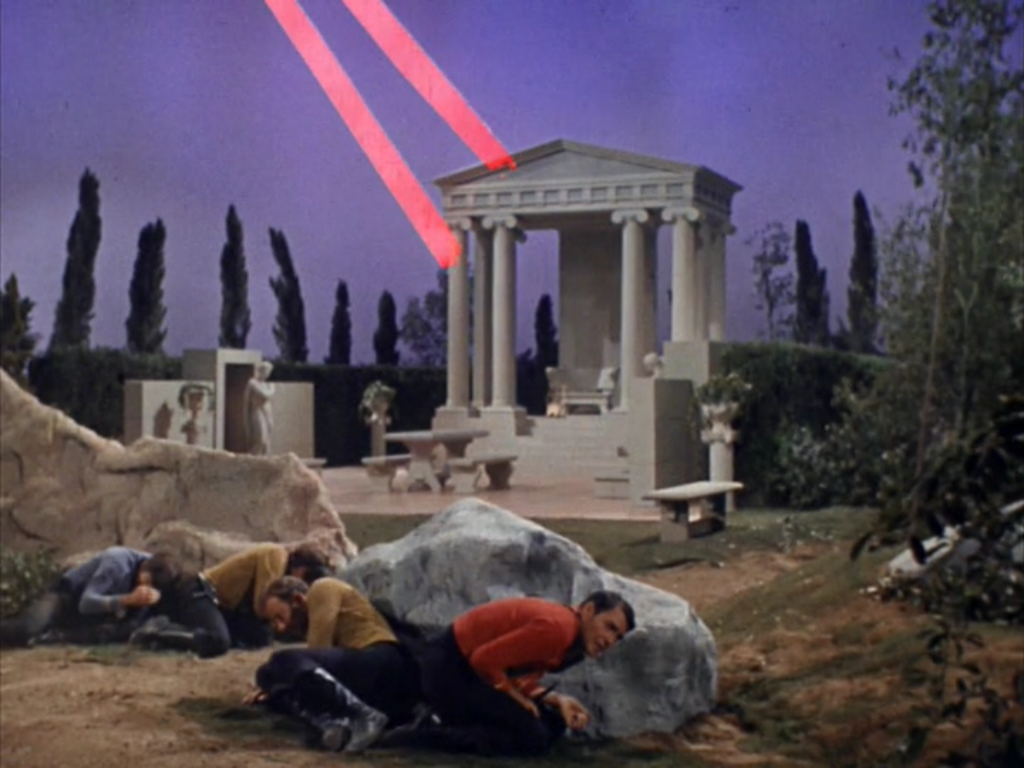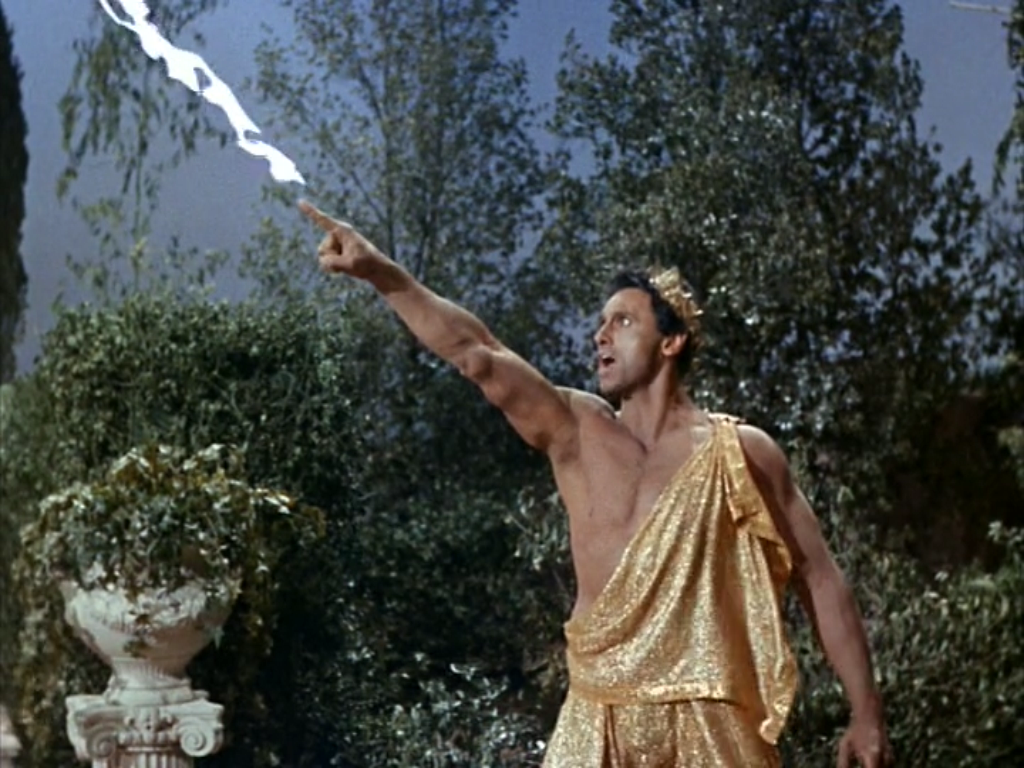In case you missed it this morning, the Moon and Venus were nicely paired together - an event astronomers call a conjunction. Here's how the view looked from my back yard:
Several hours earlier, before they became visible in Arizona, the Moon passed directly in front of Venus. Observers in Africa, India & parts of Asia would have been able to see the event.
Wednesday, February 26, 2014
Tuesday, February 25, 2014
Video: Fred Lawerence Whipple Observatory
I've blogged about the Fred Lawrence Whipple Observatory before, but here's a cool new video about it. Check it out:
Saturday, February 22, 2014
Sunrises, Sun Dog and Balloon
It has been a good week for watching the sky. Not so much for astronomy as we've had a lot of cirrus clouds. Cirrus often makes for great sunrises and sunsets though and I managed to catch 2 sunrises this week.
Here's how the sunrise looked Wednesday morning:
and this morning:
Here's how the sunrise looked Wednesday morning:
and this morning:
In Tucson February mornings seem almost as if they were made for riding in hot air balloons. I noticed just one this morning. It took off in the right position to bring it close to our house. The cirrus clouds were still there and the light of the sun, now fully above the horizon, was producing a nice sun dog. I managed to catch the hot air balloon and the sun dog (lower left) in the same shot.
The balloon did end up making a close pass by our home on this fine day for drifting through the desert skies.
Sunday, February 16, 2014
Telescope Tourist: Mount Graham's Large Binocular Telescope in 3D
A few years ago I had the pleasure of visiting Mount Graham International Observatory (MGIO) to get a guided tour of the Large Binocular Telescope (LBT). MGIO is located 10,470 feet (3,191 meters) above sea level in the mountains of eastern Arizona.
In addition to the LBT, MGIO is home to the Vatican Observatory's Advanced Technology Telescope. It sports a 1.8-meter mirror that was spuncast at the University of Arizona's Steward Observatory Mirror Lab.
The Observatory is also home to the University of Arizona's Heinrich Hertz Submillimeter Telescope. Submillimeter astronomy looks at wavelengths of light that are invisible to human eyes. This portion of the spectrum longer in wavelength than visible light, but shorter than radio or even microwaves (no, not the ovens).
The LBT's "dome" bears some resemblance to the structure that houses the MMT Observatory (they're both rectangular in shape), but it really is quite unique.
The whole upper portion (the part that isn't green) turns with the telescope and has tubes that stick out that look almost like the big guns you might find on a battleship. They are part of the air handling system that helps keep the interior atmosphere at nighttime temperature.
Of course the really unique stuff is on the inside. The telescope has two 8.4-meter mirrors on one altitude-azimuth mount. This gives it the optical collecting area equivalent to an 11.8-meter telescope and theoretically the resolving power of a 22.8-meter telescope. In other words it is big. You might even say gigantic (Yes, there even bigger scopes coming in the future, but this really is huge.) It was big enough that I wished I had had a wider angle lens with me.
During my visit the telescope was tipped all the way down so as to be pointed at the horizon. We came in from behind and walked around its left side. The circular red area with the silver struts attached to it is the cell that holds the left-hand primary mirror. The red area at right (with all the holes in it) is one of the telescope's two semicircular bearings that move the telescope in altitude. When they want to move in azimuth the telescope is brought along for the ride as the whole upper part of the building is rotated.
Stepping in a little further, looking at the telescope almost from the side, gives a much better view of the telescope's bearing. The mirror in it's cell is top center and you can see a secondary mirror to the left (there's a red cable hanging down that almost blocks the view).
Here's a better view of one of the secondary mirrors. It is 0.91 meters (36 inches) across.
Looking up at the left-hand primary mirror you can see the depth of its curvature. The mirror is 35.2 inches thick at the edge and just 17.2 at the center hole. The primary mirrors are "fast" with an f/ratio of 1.142. They were also made at the University of Arizona's Steward Observatory Mirror Lab.
Here's nearly face on shot of the left side primary mirror. That's a tertiary mirror in front of it.
Here's the whole telescope as seen from the front. Both primary mirrors are visible. There's a silver support structure that runs across bridging the two sides. Look at the lower right side of that where it meets the red part. Do you see the little white tube there?
That's a small Meade refracting telescope that was used (and maybe still is) to verify where the main telescope is pointing.
This is me (left) standing with LBTO Instrument Support Astronomer Dave Thompson under the telescope's other primary mirror. Dave kind enough to give us the tour of LBT. I first met Dave when he was observing at Palomar as a Caltech postdoc.
Every so often one of the telescope's primary mirrors need to get a new reflective coating of aluminum. When this happens the mirror remains in place on the telescope and the the giant re-aluminumizing chamber is brought to it. Here's what the aluminumizing chamber looks like. It is stored down on the ground floor when not in use.
Rounding to the back of the telescope here's a view showing the mirror cell for the right-hand mirror (upper right) and the telescope's two bearings for moving it in altitude.
If you want to keep up with everything related to the LBT, be sure to check out the It's happening at LBT blog. There's great stuff there that you wont find on the official website. The color quality isn't the best, but you might want to check out the webcam from the VATT pointed at LBT.
I took a number of stereo pairs while I was there that I converted into red-blue anaglyphs. If you've got the red-blue glasses the next three photos should give you 3-D views of the telescope. I hope you enjoy them.
In addition to the LBT, MGIO is home to the Vatican Observatory's Advanced Technology Telescope. It sports a 1.8-meter mirror that was spuncast at the University of Arizona's Steward Observatory Mirror Lab.
The Observatory is also home to the University of Arizona's Heinrich Hertz Submillimeter Telescope. Submillimeter astronomy looks at wavelengths of light that are invisible to human eyes. This portion of the spectrum longer in wavelength than visible light, but shorter than radio or even microwaves (no, not the ovens).
The LBT's "dome" bears some resemblance to the structure that houses the MMT Observatory (they're both rectangular in shape), but it really is quite unique.
The whole upper portion (the part that isn't green) turns with the telescope and has tubes that stick out that look almost like the big guns you might find on a battleship. They are part of the air handling system that helps keep the interior atmosphere at nighttime temperature.
Of course the really unique stuff is on the inside. The telescope has two 8.4-meter mirrors on one altitude-azimuth mount. This gives it the optical collecting area equivalent to an 11.8-meter telescope and theoretically the resolving power of a 22.8-meter telescope. In other words it is big. You might even say gigantic (Yes, there even bigger scopes coming in the future, but this really is huge.) It was big enough that I wished I had had a wider angle lens with me.
During my visit the telescope was tipped all the way down so as to be pointed at the horizon. We came in from behind and walked around its left side. The circular red area with the silver struts attached to it is the cell that holds the left-hand primary mirror. The red area at right (with all the holes in it) is one of the telescope's two semicircular bearings that move the telescope in altitude. When they want to move in azimuth the telescope is brought along for the ride as the whole upper part of the building is rotated.
Stepping in a little further, looking at the telescope almost from the side, gives a much better view of the telescope's bearing. The mirror in it's cell is top center and you can see a secondary mirror to the left (there's a red cable hanging down that almost blocks the view).
Here's a better view of one of the secondary mirrors. It is 0.91 meters (36 inches) across.
Looking up at the left-hand primary mirror you can see the depth of its curvature. The mirror is 35.2 inches thick at the edge and just 17.2 at the center hole. The primary mirrors are "fast" with an f/ratio of 1.142. They were also made at the University of Arizona's Steward Observatory Mirror Lab.
Here's nearly face on shot of the left side primary mirror. That's a tertiary mirror in front of it.
Here's the whole telescope as seen from the front. Both primary mirrors are visible. There's a silver support structure that runs across bridging the two sides. Look at the lower right side of that where it meets the red part. Do you see the little white tube there?
That's a small Meade refracting telescope that was used (and maybe still is) to verify where the main telescope is pointing.
This is me (left) standing with LBTO Instrument Support Astronomer Dave Thompson under the telescope's other primary mirror. Dave kind enough to give us the tour of LBT. I first met Dave when he was observing at Palomar as a Caltech postdoc.
Every so often one of the telescope's primary mirrors need to get a new reflective coating of aluminum. When this happens the mirror remains in place on the telescope and the the giant re-aluminumizing chamber is brought to it. Here's what the aluminumizing chamber looks like. It is stored down on the ground floor when not in use.
Rounding to the back of the telescope here's a view showing the mirror cell for the right-hand mirror (upper right) and the telescope's two bearings for moving it in altitude.
If you want to keep up with everything related to the LBT, be sure to check out the It's happening at LBT blog. There's great stuff there that you wont find on the official website. The color quality isn't the best, but you might want to check out the webcam from the VATT pointed at LBT.
I took a number of stereo pairs while I was there that I converted into red-blue anaglyphs. If you've got the red-blue glasses the next three photos should give you 3-D views of the telescope. I hope you enjoy them.
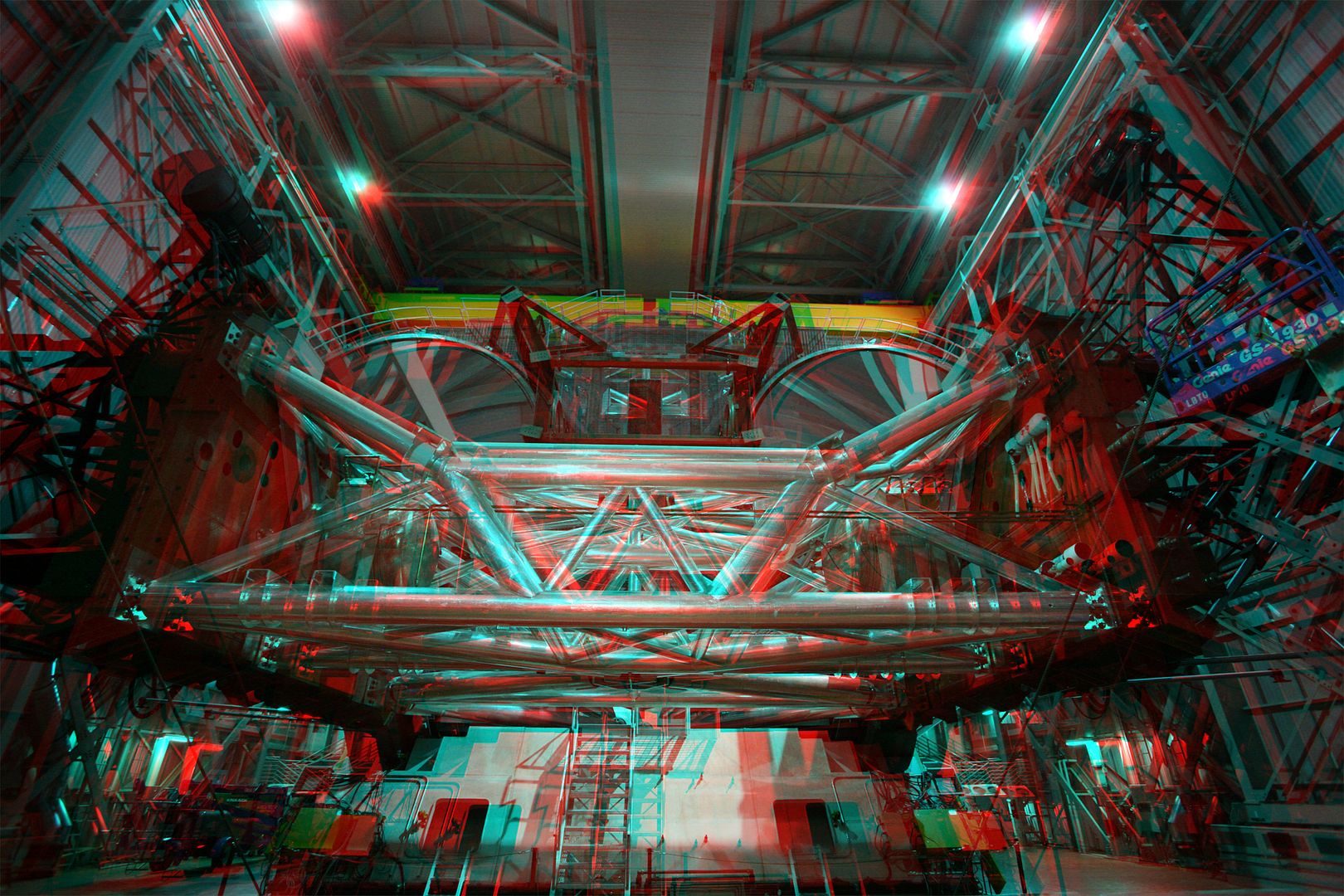 |
| LBT in 3D, from the front |
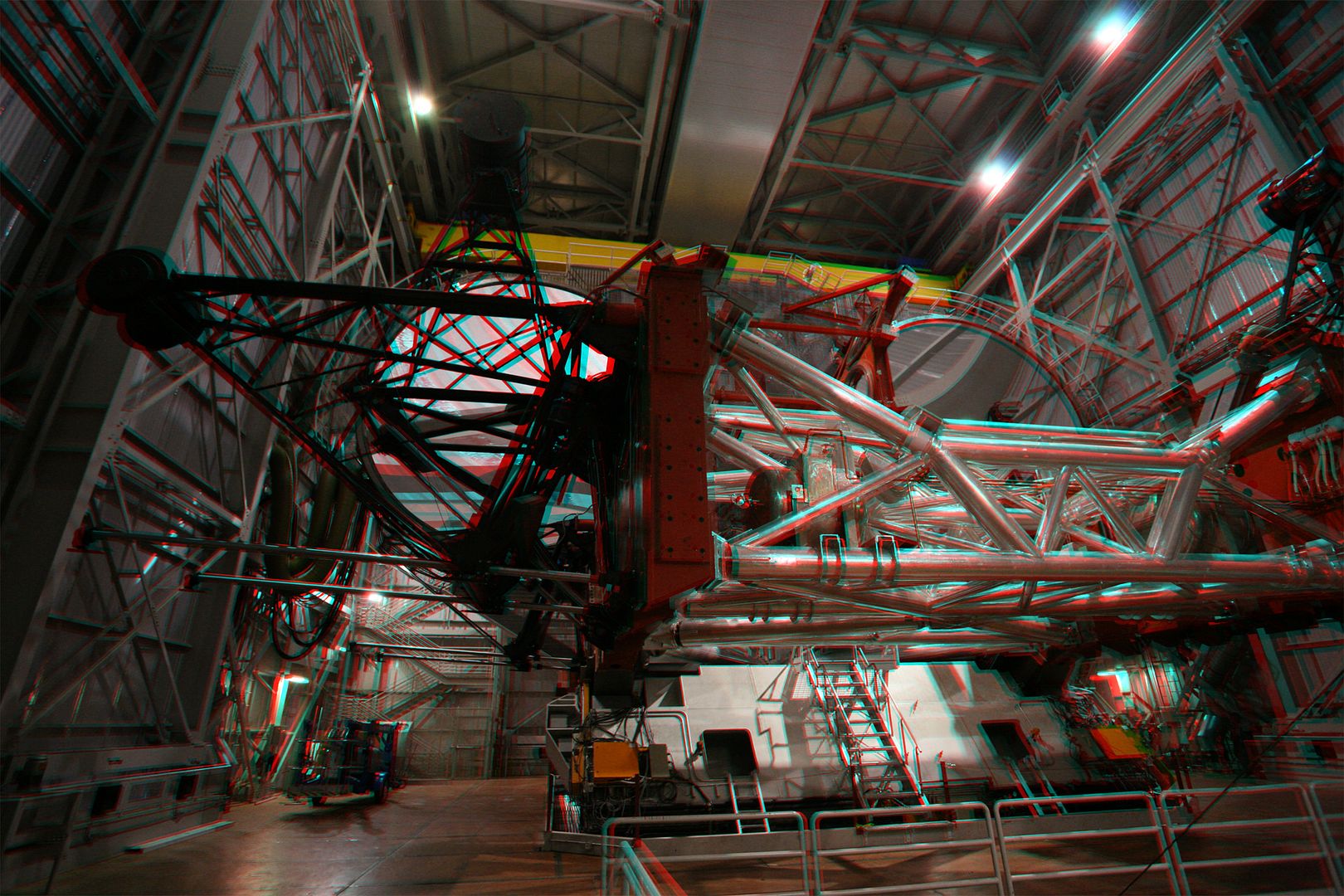 |
| LBT in 3D from the front but off center |
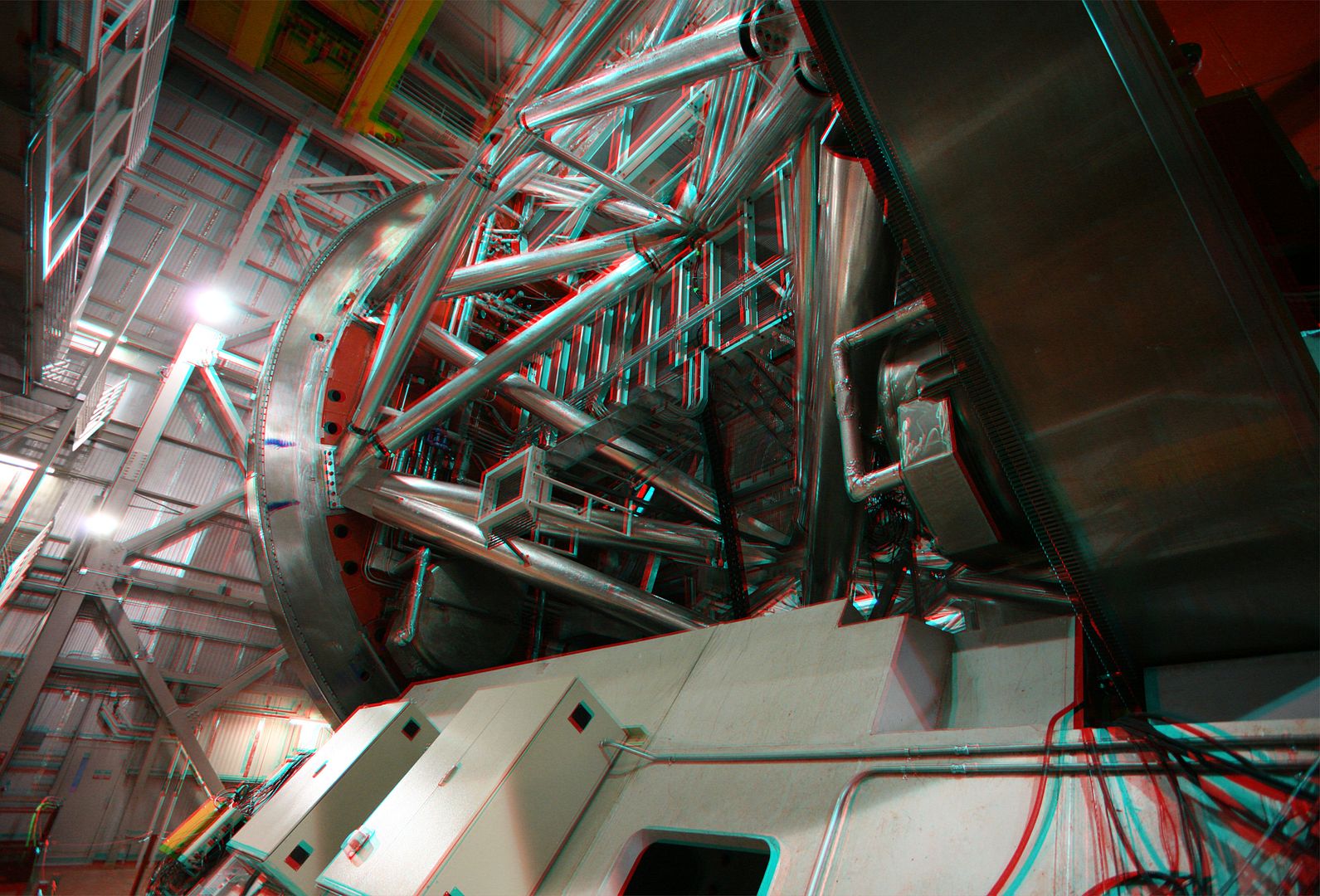 |
| LBT in 3D the back end of the telescope |
Saturday, February 15, 2014
In The Shadow Of The Moon
I recently finished reading In The Shadow Of The Moon, by Francis French and Colin Burgess.
While it isn't a newly published book (it came out in 2007), it was a really good read and I thought I say something about it here.
The book wonderfully details the exciting times in the U.S. and Soviet space programs from 1965 to 1969. Project Gemini takes center stage early on. It had been quite a while since I had read much of anything about Gemini and I had forgotten how daring the program was.
Not only was the space program learning how to do all of the tasks (such as spacewalking, rendezvous, and docking) that were needed for missions to the Moon, but NASA was still learning how to be NASA. All of this was happening a breakneck speed. So much so that the lessons of one mission didn't always get transferred to the next.
The book explores this, with many rich behind-the-scenes interviews with the astronauts and other key figures in the program.
As I was reading I found myself going online to look for images from each of the missions. One excellent source, for especially images from Project Gemini, is March to the Moon. I've posted a few of my favorite Gemini mission photos below. The captions are links to where you can download full resolution versions of the images. In some cases I've rotated or cropped the images.
Of course Gemini was followed by Apollo. The books coverage of the Apollo 1 tragedy, and losses felt in the Soviet space program, was heart wrenching. In reading I had to occasionally put the book down for a while as, even though I knew a lot about the Apollo 1 fire, it was emotional.
From there, the authors take the readers all the way to the first Moon landing, the triumph of Apollo 11. The missions of Apollos 7, 9, and 10 are often glossed over by many but they were key test flights of the hardware that made the Moon landings possible. The coverage of these missions and the men who flew them was inspirational.
I didn't find any particularly good galleries of Apollo mission imagery--even the ones by NASA itself were pretty poor--so I wont share any Apollo images here.
I highly recommend In The Shadow Of The Moon for anyone interested in the history of the space program.
While it isn't a newly published book (it came out in 2007), it was a really good read and I thought I say something about it here.
The book wonderfully details the exciting times in the U.S. and Soviet space programs from 1965 to 1969. Project Gemini takes center stage early on. It had been quite a while since I had read much of anything about Gemini and I had forgotten how daring the program was.
Not only was the space program learning how to do all of the tasks (such as spacewalking, rendezvous, and docking) that were needed for missions to the Moon, but NASA was still learning how to be NASA. All of this was happening a breakneck speed. So much so that the lessons of one mission didn't always get transferred to the next.
The book explores this, with many rich behind-the-scenes interviews with the astronauts and other key figures in the program.
As I was reading I found myself going online to look for images from each of the missions. One excellent source, for especially images from Project Gemini, is March to the Moon. I've posted a few of my favorite Gemini mission photos below. The captions are links to where you can download full resolution versions of the images. In some cases I've rotated or cropped the images.
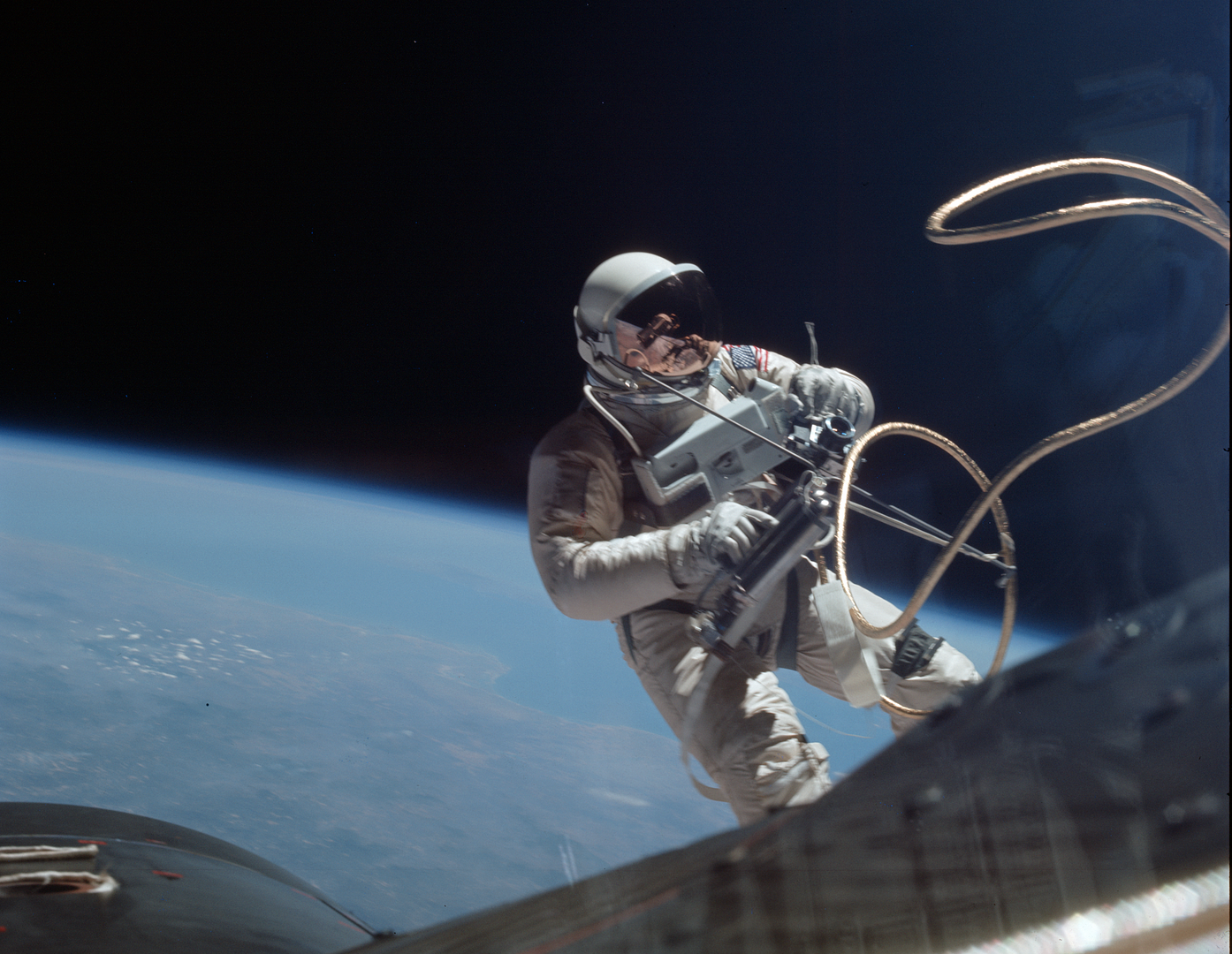 |
| Ed White makes the first U.S. spacewalk on Gemini IV |
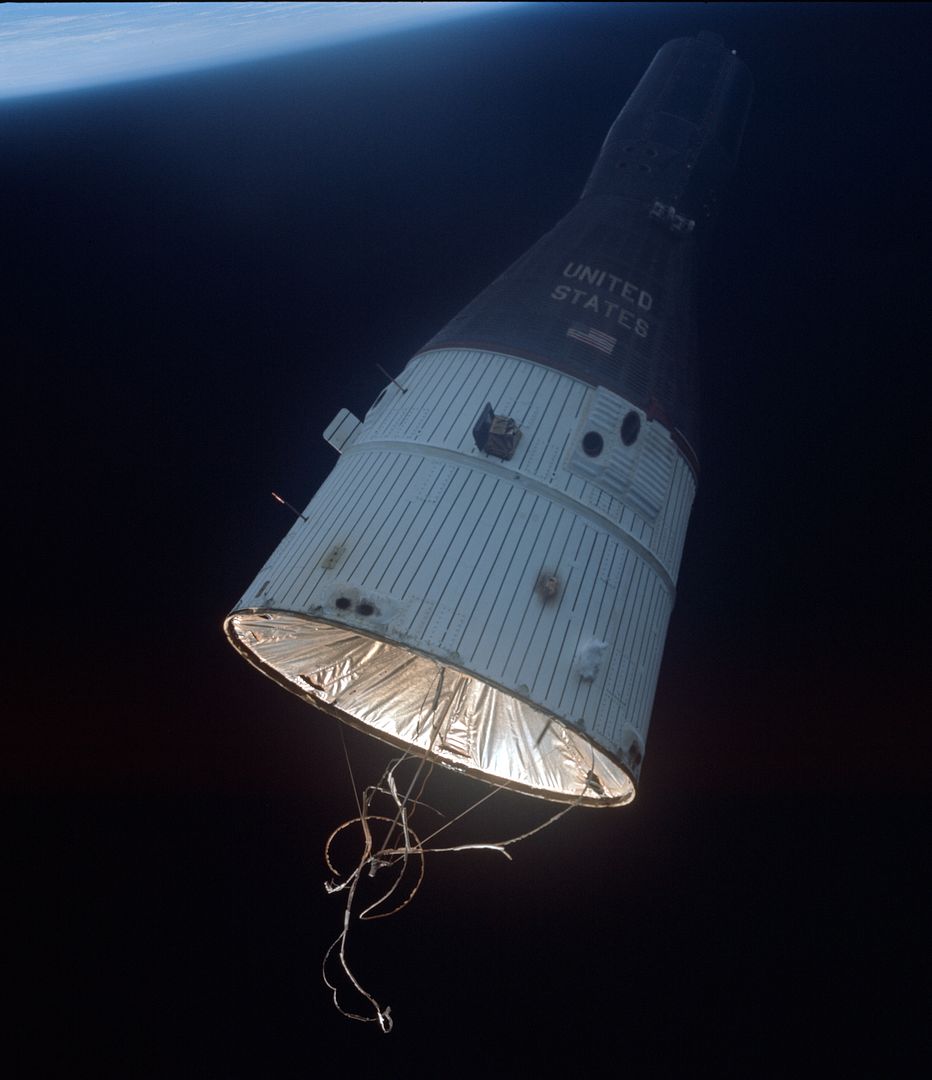 |
| Gemini VII photographed from Gemini VI during the historic first space rendezvous |
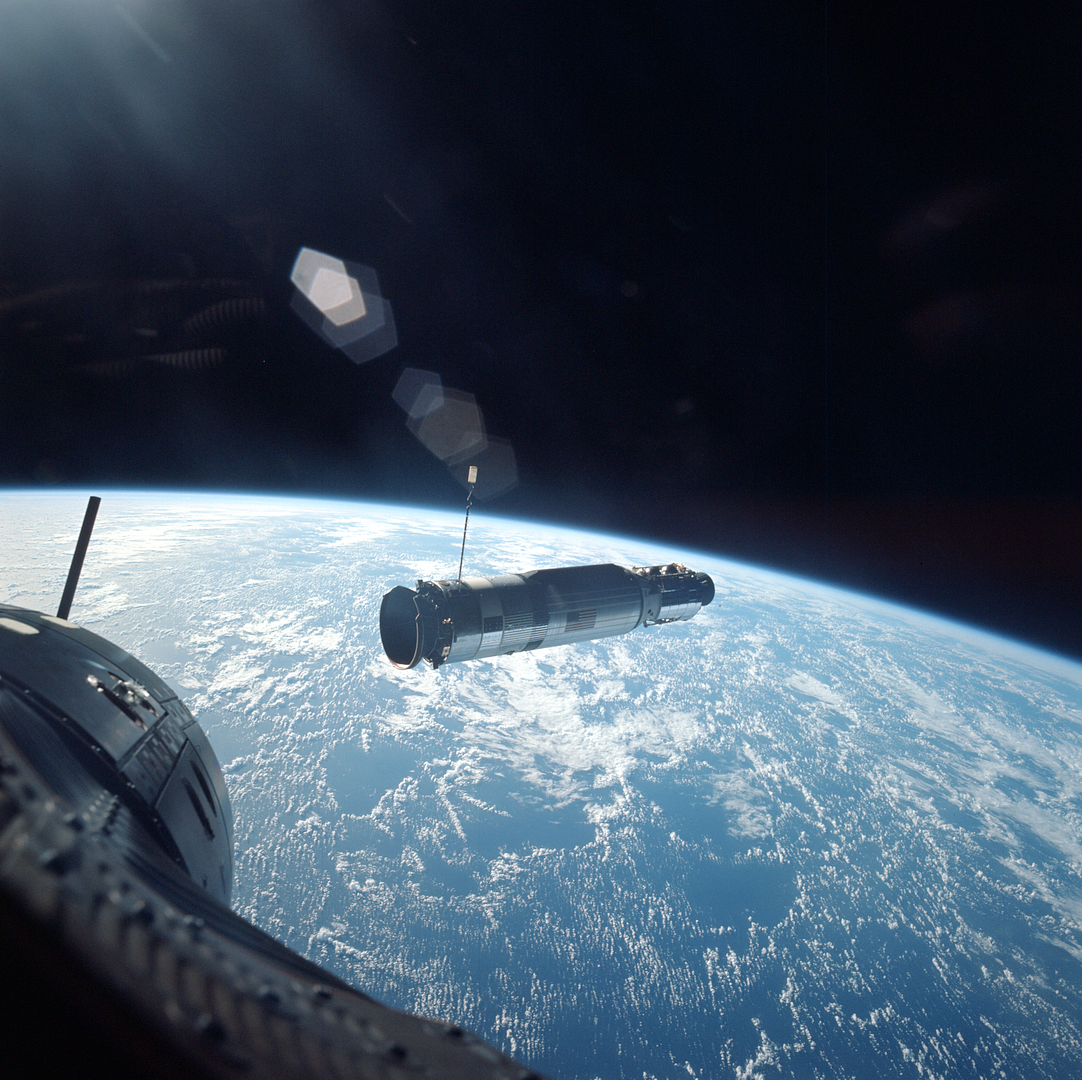 |
| Gemini X's Agena Target Vehicle |
 |
| Gemini XII's Agena Target Vehicle |
From there, the authors take the readers all the way to the first Moon landing, the triumph of Apollo 11. The missions of Apollos 7, 9, and 10 are often glossed over by many but they were key test flights of the hardware that made the Moon landings possible. The coverage of these missions and the men who flew them was inspirational.
I didn't find any particularly good galleries of Apollo mission imagery--even the ones by NASA itself were pretty poor--so I wont share any Apollo images here.
I highly recommend In The Shadow Of The Moon for anyone interested in the history of the space program.
Sunday, February 9, 2014
Star Trek: Who Mourns For Adonais?
It is time for another episode of classic Star Trek, and it's a good one too: Who Mourns For Adonais?
As the episode begins we learn that Scotty has taken a shine to Lieutenant Carolyn Palamas who reports that there is a "strange lack of intelligent life on the planets" in this system. I guess in the Star Trek universe there's not only intelligent life in every solar system but on multiple planets too. That seems kind of over the top, even for Trek.
They head into orbit about Pollux IV they encounter a giant hand that grabs the Enterprise by the primary hull.
Soon afterwards they are greeted by none other than the Greek God Apollo, expertly played by Michael Forest. He really nailed the part and the writers gave him good stuff to work with too. He greets the Enterprise crew with this:
Apollo wants nothing more then for them to give up everything so that they can live there and worship him. I'm not quite sure why Apollo thinks that a space-faring species would want an end to warm showers in favor of tending herds of sheep, but that's his offer and he isn't interested in taking "no" for an answer.
There's a lot of back and forth where Apollo talks about how great it will be and how beautiful Carolyn is, whereupon Scotty gets jealous and challenges Apollo. It doesn't go too well for Scotty.
Or for Kirk when he does the same.
Apollo puts some serious moves on Carolyn. First with this: "You are beautiful. You would do Aphrodite credit. I will tell you a thousand tales, stories of courage and love. You will know what it is to be a goddess." And then, "I offer you more than your wildest dreams have ever imagined. You'll become the mother of a new race of gods. You'll inspire the universe. All men will revere you almost as a god yourself. And I shall love you for time without end, worlds without end. You shall complete me, and I you."
Guys, I dare you to top that.
While they were alone Apollo also gives Carolyn some back story on the gods:
Kirk realizes that the only way they'll have a chance against Apollo is to overtax him and that to do that they'll need Carolyn's help. He orders her to reject him.
She does and, not surprisingly, Apollo doesn't take it well. After all, its been 5,000 years since he's had a girlfriend.
Thankfully the landing party hears from Spock and Kirk orders him to fire phasers at Apollo's temple (which they had determined to be his power source).
Apollo fights back but his thunderbolts are no match for phaser fire.
In his big farewell, Apollo appeals to the other gods: "Zeus, Hermes, Hera, Aphrodite. You were right. Athena, you were right. The time has passed. There is no room for gods. Forgive me, my old friends. Take me. Take me." And he fades away much like Charlie X and Trelane did. Of the three, Apollo's is the coolest though.
McCoy turns to Kirk and says, "I wish we hadn't had to do this" and Kirk agrees saying, "Would it have hurt us, I wonder, just to have gathered a few laurel leaves?" It's a little late to ask that, don't you think?
Some 70 years later, a future captain of the Enterprise, with an intense interest in archaeology and ancient civilizations, will certainly read Kirk's log entries of this event and react accordingly.
Still, this is a top notch episode and well worth watching or re-watching (do so here). The story of Apollo does have a sequel. Last year, the fan-based Star Trek Continues released their first episode, Pilgrim of Eternity. It wonderfully brings Michael Forest back into the role of Apollo in a great follow-up story.
The Star Trek Continues web-series takes up right after Season 3 of TOS. It is quality stuff that every Trek fan should take a look at. They just released their second episode too. Star Trek Continues really captures the look and feel of Star Trek.
Back to Who Mourns For Adonais?, let me mention that composer Fred Steiner really knocked it out of the park here too with about 29 minutes of music composed for this episode. It is all on the wonderful complete set of TOS music from La-La Land Records. Here's a sample track from this episode.
Speaking of music, the band Five Year Mission has a cool song about this episode that is a lot of fun. Here's their video of it:
Next up is another stand out episode, Amok Time.
As the episode begins we learn that Scotty has taken a shine to Lieutenant Carolyn Palamas who reports that there is a "strange lack of intelligent life on the planets" in this system. I guess in the Star Trek universe there's not only intelligent life in every solar system but on multiple planets too. That seems kind of over the top, even for Trek.
They head into orbit about Pollux IV they encounter a giant hand that grabs the Enterprise by the primary hull.
Soon afterwards they are greeted by none other than the Greek God Apollo, expertly played by Michael Forest. He really nailed the part and the writers gave him good stuff to work with too. He greets the Enterprise crew with this:
The eons have passed and what has been written has come about. You are most welcome, my beloved children. Your places await you. You have left your plains and valleys and made this bold venture. So it was in the beginning. You have made me proud. Now you can rest.
Kirk isn't buying whatever this guy is selling though, but when Apollo applies pressure on the Enterprise hull with his hand he agrees to beam down to see him. It is there that we learn who he really is.
"Search your most distant memories, those of the thousands of years past, and I am there. Your fathers knew me, and your father's fathers. I am Apollo."
Apollo wants nothing more then for them to give up everything so that they can live there and worship him. I'm not quite sure why Apollo thinks that a space-faring species would want an end to warm showers in favor of tending herds of sheep, but that's his offer and he isn't interested in taking "no" for an answer.
There's a lot of back and forth where Apollo talks about how great it will be and how beautiful Carolyn is, whereupon Scotty gets jealous and challenges Apollo. It doesn't go too well for Scotty.
Or for Kirk when he does the same.
Apollo puts some serious moves on Carolyn. First with this: "You are beautiful. You would do Aphrodite credit. I will tell you a thousand tales, stories of courage and love. You will know what it is to be a goddess." And then, "I offer you more than your wildest dreams have ever imagined. You'll become the mother of a new race of gods. You'll inspire the universe. All men will revere you almost as a god yourself. And I shall love you for time without end, worlds without end. You shall complete me, and I you."
Guys, I dare you to top that.
While they were alone Apollo also gives Carolyn some back story on the gods:
We're immortal, we gods. But the Earth changed. Your fathers changed. They turned away until we were only memories. A god cannot survive as a memory. We need love, admiration, worship, as you need food....In a real sense, we were gods. We had the power of life and death. We could have struck out from Olympus and destroyed. We have no wish to destroy, so we came home again. It was an empty place without worshipers, but we had no strength to leave, so we waited, all of us, through the long years....But I knew you would come. You striving, bickering, foolishly brave humans. I knew you would come to the stars one day. Of all the gods, I knew and I waited, waited for you to come and sit by my side.Meanwhile, Spock is aboard the Enterprise trying to get some holes in Apollo's force field (the big hand) in an attempt to open up windows for communications & phase fire. He's also making use of a nifty circular slide rule.
Kirk realizes that the only way they'll have a chance against Apollo is to overtax him and that to do that they'll need Carolyn's help. He orders her to reject him.
She does and, not surprisingly, Apollo doesn't take it well. After all, its been 5,000 years since he's had a girlfriend.
Thankfully the landing party hears from Spock and Kirk orders him to fire phasers at Apollo's temple (which they had determined to be his power source).
Apollo fights back but his thunderbolts are no match for phaser fire.
In his big farewell, Apollo appeals to the other gods: "Zeus, Hermes, Hera, Aphrodite. You were right. Athena, you were right. The time has passed. There is no room for gods. Forgive me, my old friends. Take me. Take me." And he fades away much like Charlie X and Trelane did. Of the three, Apollo's is the coolest though.
McCoy turns to Kirk and says, "I wish we hadn't had to do this" and Kirk agrees saying, "Would it have hurt us, I wonder, just to have gathered a few laurel leaves?" It's a little late to ask that, don't you think?
Some 70 years later, a future captain of the Enterprise, with an intense interest in archaeology and ancient civilizations, will certainly read Kirk's log entries of this event and react accordingly.
Still, this is a top notch episode and well worth watching or re-watching (do so here). The story of Apollo does have a sequel. Last year, the fan-based Star Trek Continues released their first episode, Pilgrim of Eternity. It wonderfully brings Michael Forest back into the role of Apollo in a great follow-up story.
The Star Trek Continues web-series takes up right after Season 3 of TOS. It is quality stuff that every Trek fan should take a look at. They just released their second episode too. Star Trek Continues really captures the look and feel of Star Trek.
Back to Who Mourns For Adonais?, let me mention that composer Fred Steiner really knocked it out of the park here too with about 29 minutes of music composed for this episode. It is all on the wonderful complete set of TOS music from La-La Land Records. Here's a sample track from this episode.
Speaking of music, the band Five Year Mission has a cool song about this episode that is a lot of fun. Here's their video of it:
Next up is another stand out episode, Amok Time.
Saturday, February 1, 2014
Cosmos Returns!
Carl Sagan's legacy lives on as a new version of Cosmos is coming back to TV. The show's first run on PBS in 1980 as Cosmos - A Personal Voyage was one of the top documentaries ever produced. Through his writing and his media appearances Carl Sagan had a profound and positive influence on so many people - including myself.
The media market has certainly changed enormously in the last 34 years and I hope that the new version, Cosmos - A Space Time Odyssey, will become just as successful.
In the new version Neil deGrasse Tyson takes over as host. The show is written by Sagan's widow Ann Druyan, who co-wrote the original version with Sagan. Here's the trailer for the new show, which debuts on Fox on March 9:
It certainly looks faster and edgier than the original Cosmos, but that isn't too surprising as that is what today's market expects.
In spite of it being somewhat dated now, Sagan's Cosmos is still very much worth watching. It is out on DVD (I have the set), but also available on line.
I wonder if the new series will have any moments like this one:
I hope so.
The media market has certainly changed enormously in the last 34 years and I hope that the new version, Cosmos - A Space Time Odyssey, will become just as successful.
In the new version Neil deGrasse Tyson takes over as host. The show is written by Sagan's widow Ann Druyan, who co-wrote the original version with Sagan. Here's the trailer for the new show, which debuts on Fox on March 9:
It certainly looks faster and edgier than the original Cosmos, but that isn't too surprising as that is what today's market expects.
In spite of it being somewhat dated now, Sagan's Cosmos is still very much worth watching. It is out on DVD (I have the set), but also available on line.
I wonder if the new series will have any moments like this one:
Subscribe to:
Posts (Atom)
